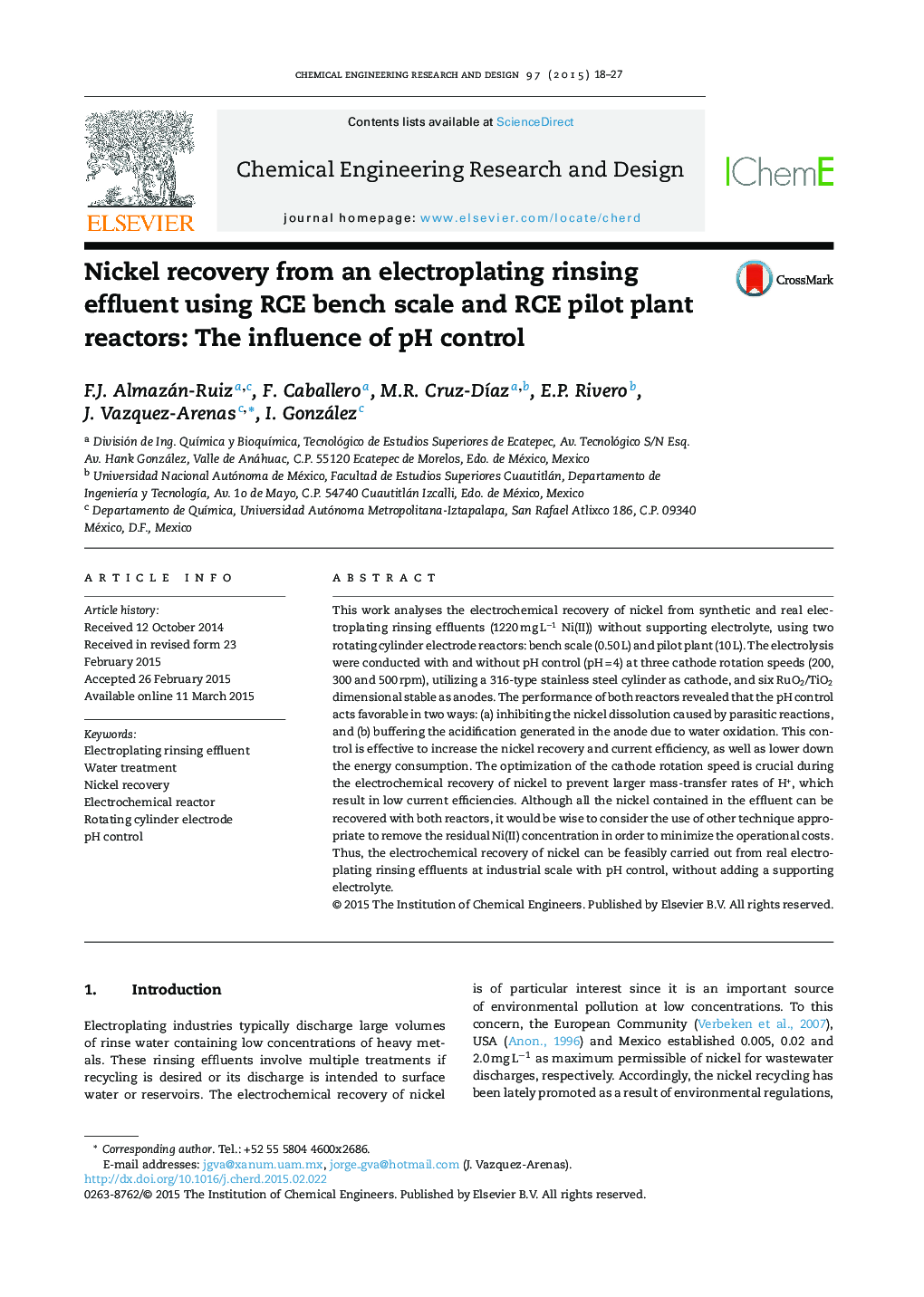| کد مقاله | کد نشریه | سال انتشار | مقاله انگلیسی | نسخه تمام متن |
|---|---|---|---|---|
| 621272 | 1455171 | 2015 | 10 صفحه PDF | دانلود رایگان |

• Electrochemical recovery of nickel from a real electroplating rinsing effluent.
• Bench scale and pilot plant electrochemical reactors are successfully implemented.
• pH control mitigates the acidification generated in the anode due to H2O oxidation.
• The electrochemical recovery of nickel is viable without a supporting electrolyte.
• Nickel recovery and current efficiency are enhanced with pH control.
This work analyses the electrochemical recovery of nickel from synthetic and real electroplating rinsing effluents (1220 mg L−1 Ni(II)) without supporting electrolyte, using two rotating cylinder electrode reactors: bench scale (0.50 L) and pilot plant (10 L). The electrolysis were conducted with and without pH control (pH = 4) at three cathode rotation speeds (200, 300 and 500 rpm), utilizing a 316-type stainless steel cylinder as cathode, and six RuO2/TiO2 dimensional stable as anodes. The performance of both reactors revealed that the pH control acts favorable in two ways: (a) inhibiting the nickel dissolution caused by parasitic reactions, and (b) buffering the acidification generated in the anode due to water oxidation. This control is effective to increase the nickel recovery and current efficiency, as well as lower down the energy consumption. The optimization of the cathode rotation speed is crucial during the electrochemical recovery of nickel to prevent larger mass-transfer rates of H+, which result in low current efficiencies. Although all the nickel contained in the effluent can be recovered with both reactors, it would be wise to consider the use of other technique appropriate to remove the residual Ni(II) concentration in order to minimize the operational costs. Thus, the electrochemical recovery of nickel can be feasibly carried out from real electroplating rinsing effluents at industrial scale with pH control, without adding a supporting electrolyte.
Figure optionsDownload high-quality image (88 K)Download as PowerPoint slide
Journal: Chemical Engineering Research and Design - Volume 97, May 2015, Pages 18–27